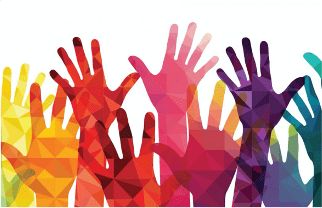by Molly Penn and Marita Phelps
To what degree is your leadership structure the result of intentional design? Change—even forced change—is good: It makes us reimagine our future, innovate and adapt, and learn new skills to thrive. It is difficult for many executives to emerge from the daily hustle and take a step back. One of the greatest opportunities afforded you as a leader in this post-pandemic world is the gift of starting again.
Three Leadership approaches
The design of your leadership style is one area that deserves a fresh set of eyes because it directly impacts your people, processes, and performance. Leadership style dictates how people interact, how decisions are made, how information flows, and how work gets done. Below we examine several models of leadership, particularly in the context of the culture they empower or stifle.
Top-down
Often compared to the hierarchical structure of military organizations (“command and control”), top-down design dictates that decisions are made by one or several leaders, and communication trickles down to the rest of the organization from there. Top-down organizations often have many layers and tend to be bureaucratic.
Of the models, top-down is the most traditional approach seen in governments and corporations. It cultivates a culture where quick decision making is valued, and power is conveyed according to one’s position in the hierarchy (“positional power”).
Consensus
Perhaps the most harmonious of the three, consensus leadership values collaboration, inclusivity, and participation. Decision making is the responsibility of an entire organization, with all relevant stakeholder groups weighing in. By considering multiple points of view, consensus culture breeds mass empowerment for creativity and innovation.
This approach can increase employee buy-in to the detriment of efficiency because all people have a voice in decision making. Some complain that consensus leadership waters down decisions to the “lowest common denominator.” Typically, smaller organizations adopt a consensus model, or it is an approach used when diverse stakeholders convene (for example, the 2015 United Nations Climate Change Conference).
Distributed
A distributed organization marries the best of both a top-down and consensus framework. It allocates decision-making power across functions and roles based on which person or group is in closest proximity to the work. This means any employee can be tapped to lead a project based on the experience and skills needed. Work is accomplished by those best fit for any given scenario, not by those with the most inflated title.
It can be challenging to build this model because employees with the experience do not always have the strongest leadership or decision-making skills. But distributed leadership is the most empowering of the three leadership styles because it levels the playing field with merit based not on title, but knowledge & capability.
Advice Process
One of the most evolved forms for distributed leadership is the Advice Process, in which anyone at any level of the organization is empowered to make a decision. To do so, they must follow these simple steps:
- Take Initiative: Having noticed an issue or opportunity, each person has the responsibility to take initiative. If they are not best placed to make a decision, then they should seek help from someone else who is better placed.
- Gather input: before proposing a decision, the person may choose to seek input to gather perspectives on the issue or opportunity.
- Seek advice: The person proposes a decision and seeks advice on the decision from: 1) those with expertise on the subject; 2) those who will be meaningfully affected by the decision
- Make a decision & inform people: having taken all advice into account, any person may make a decision and inform those who have given advice.
For organizations to pursue the Advice Process, it is advisable that they have a good conflict resolution process to work in tandem. When anyone can make a decision, it can give rise to conflicts that need to be worked out fairly for everyone to abide by the decisions made. That said, this is a model that we find intriguing, particularly for its contribution to more equitable workplaces.
Distributed leadership provides a variety of additional organizational benefits:
- Increases employee engagement and morale
- Creates a culture of equity
- Encourages agile and efficient processes
- Optimizes talent for organizational needs
How to move toward a redistribution of power
As you resolve to focus on culture this year, consider how your organization distributes its leadership (and therefore power), and what this says about who you are. While it may not be easy to rethink your leadership model, it is worth it, and now may be the right time to do it. Learn how to get started by contacting us!

